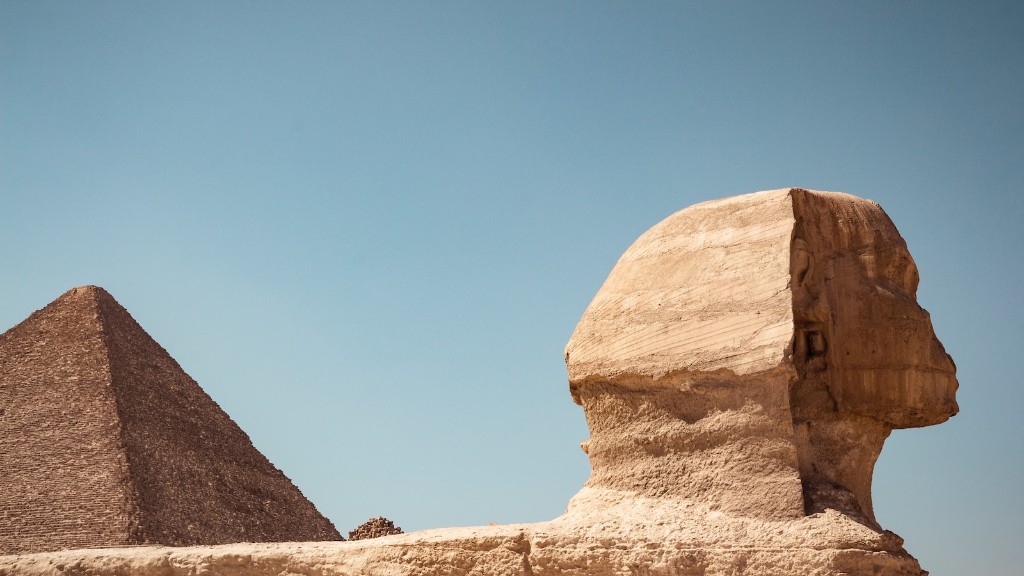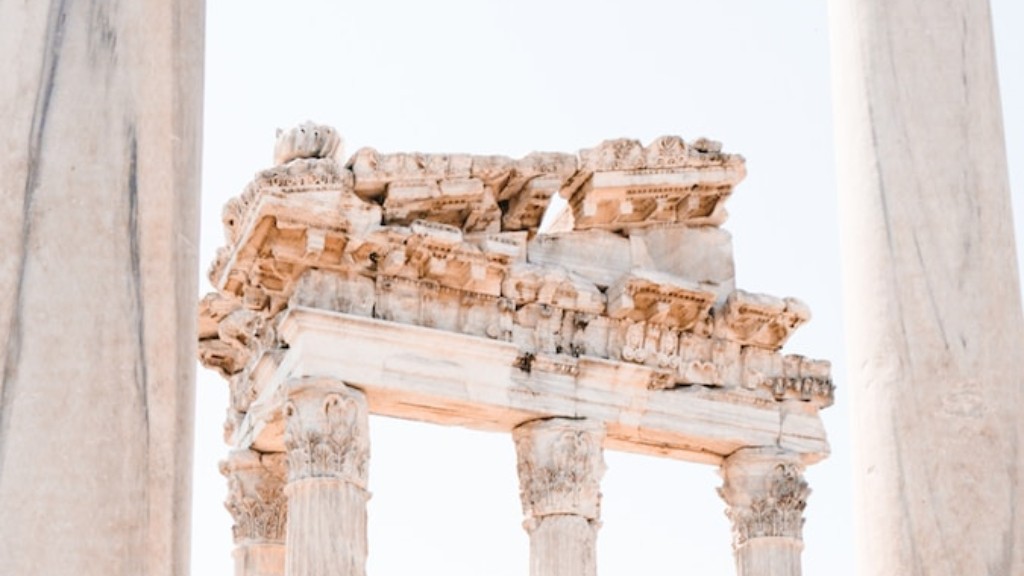The ancient Egyptians are known for their amazing constructions, the colossal pyramids being the most famous. But how did they live? What were their homes like?
Ancient Egyptians lived in mud brick houses with few furnishings. Depending on their wealth, they had furniture like chairs, tables, beds, and storage chests to hold their possessions. Walls were painted white and often decorated with drawings. Windows would be small and had no glass, only a type of linen drape. The ancient Egyptians made use of the sun’s heat as a source of heat, but did not have a means to keep their homes cool in the summer.
There is no single answer to the question of how big the average home in Ancient Egypt was, because it varied depending on the socio-economic class of the residents. The poorest Egyptians lived in small, often crowded, mud-brick huts while the wealthy had larger homes made of stone and usually including a courtyard.
Wealthy citizens had the most spacious homes, with two or even three stories. These houses could be up to 500 square meters. On the other hand, the more standard homes were significantly smaller, usually around 200 square meters.
Other factors such as the region of Egypt, location of the home, and the height of the Nile also had an effect on the size of the home because a larger home was built with an increased dependence on the floodwaters. During times of drought or a strong flood, a home could grow up to 200 square meters or be reduced to a meagre 20 square meters, respectively.
In Ancient Egypt, housing was all about status and wealth. The residences of the wealthy were built with stone and had separate domestic wings and even gardens. Ancient Egyptians believed in showing off their status. Wealthy homes were lavishly decorated with paintings, furniture and jewellery.
Materials Used
It has been reported that the earliest Egyptian homes were constructed of wood and reeds, similar to ancient Mesopotamian houses. However, when the Nile River overflowed its banks, flooding the land, mud bricks began to be used more often. This is due to the fact that mud bricks are much more durable, and therefore a much better alternative.
Building materials were also widely available in Ancient Egypt, such as flagstones, blocks of limestone, and mud. Wood was rare and had to be imported. Egyptians used mud to fill the gaps between bricks, known as “plaster”. This plaster would be mixed with straw and water, and would be applied to walls and ceilings.
The roofs of the homes were usually thatched or straw-lined, depending on the wealth of the house owner. This prevented water from seeping in, and the eaves of the houses were thickly coated with plaster to protect from rain and heat. The doors and windows of the homes were also made from wood or stone, and would be bolted shut to ensure safety.
Egyptian Architecture
The Ancient Egyptians are celebrated for their unique architectural style and masterful use of geometry to create functional and pleasing structures. Ancient Egyptians preferred symmetrical homes, either built around a courtyard or with symmetrical wings. Some even included porticos and balconies.
The Ancient Egyptians also placed a particular emphasis on the importance of the entrance to the room. This was the primary focus for ritual and symbolic representation, as the entrance was seen as a way for people to connect with the gods and the afterlife. In addition, homes often contained an ‘altar space’, an area for offerings to the gods.
The layout of Ancient Egyptian homes was often linked to the way in which they viewed the afterlife. Much like the entrance, the altar was seen as an area for communication with the gods, and so was typically placed in the innermost room of the home. This meant that the main room in the home was typically the most important, and was the hub of the dwelling.
Furnishings
As previously mentioned, Ancient Egyptian homes had limited furnishings; the furnishings they did have were made of wood and stone. These furnishings included beds, stools, chairs, and tables, and were usually decorated with painted symbols and motifs.
One of the main features of these homes was the low seating. Ancient Egyptian furnishings were usually around knee-height, which was due to the fact that Ancient Egyptians used to sit on the floor. This was to make them closer to the ground, which was seen as a more humble position.
The Ancient Egyptians also had developed a type of container made of clay known as an ostracon, which was used to store items such as clothes and food, as well as for writing on. These would usually be placed in the main living space.
Lighting
Most of the lighting in Ancient Egyptian homes would come from candles or oil lamps, but only the wealthiest members of society had access to lighting that could adequately light the entire home. This lighting, called ‘sunlighting’, was made of a substance called ‘lampblack’ which was made from burning coal. It was then mixed with oil and strained, producing a thick, smokeless and flameless flame.
Candles were made from tallow or beeswax, and were used mainly during religious ceremonies or for providing light in dim corners. The lighting from these candles, however, was not strong enough to completely light up an entire room and the Egyptians had developed an array of tricks, such as placing mirrors and glassware around the room, to maximise the amount of light.
Privacy and Security
Privacy and security were of the utmost importance in Ancient Egypt. This was mainly due to the fact that Ancient Egyptians believed in the idea of the afterlife, and would take great pains to ensure that their belongings, and homes, were kept secure from evil spirits. For this reason, homes were often surrounded by cemeteries, as these acted as a protective barrier. In addition, homes were also always built facing east, in order to absorb the sun’s energy and protect the inhabitants from the forces of darkness.
Windows were also kept small in order to deter burglars, and were covered in linen or reed curtains for privacy and to keep out the sun. Doors would often be constructed out of heavy-duty wood or stone, and would be locked with either a bar or a bolt.
Hygiene and Health Practices
Having a clean and healthy environment was important to the Ancient Egyptians, who were adamant about regularly cleaning and airing their homes. This was due to the fact that disease was rampant in some parts of Egypt. Ancient Egyptians would often burn incense, as well as herbs and spices, to freshen the air and ward off illnesses.
In addition, Ancient Egyptians also took frequent baths and changed their clothes often to keep their bodies clean and hygienic. This was especially important for those who lived in the cities, where disease spread quickly. It is believed that Ancient Egyptians were the first to recognise the importance of personal hygiene.



